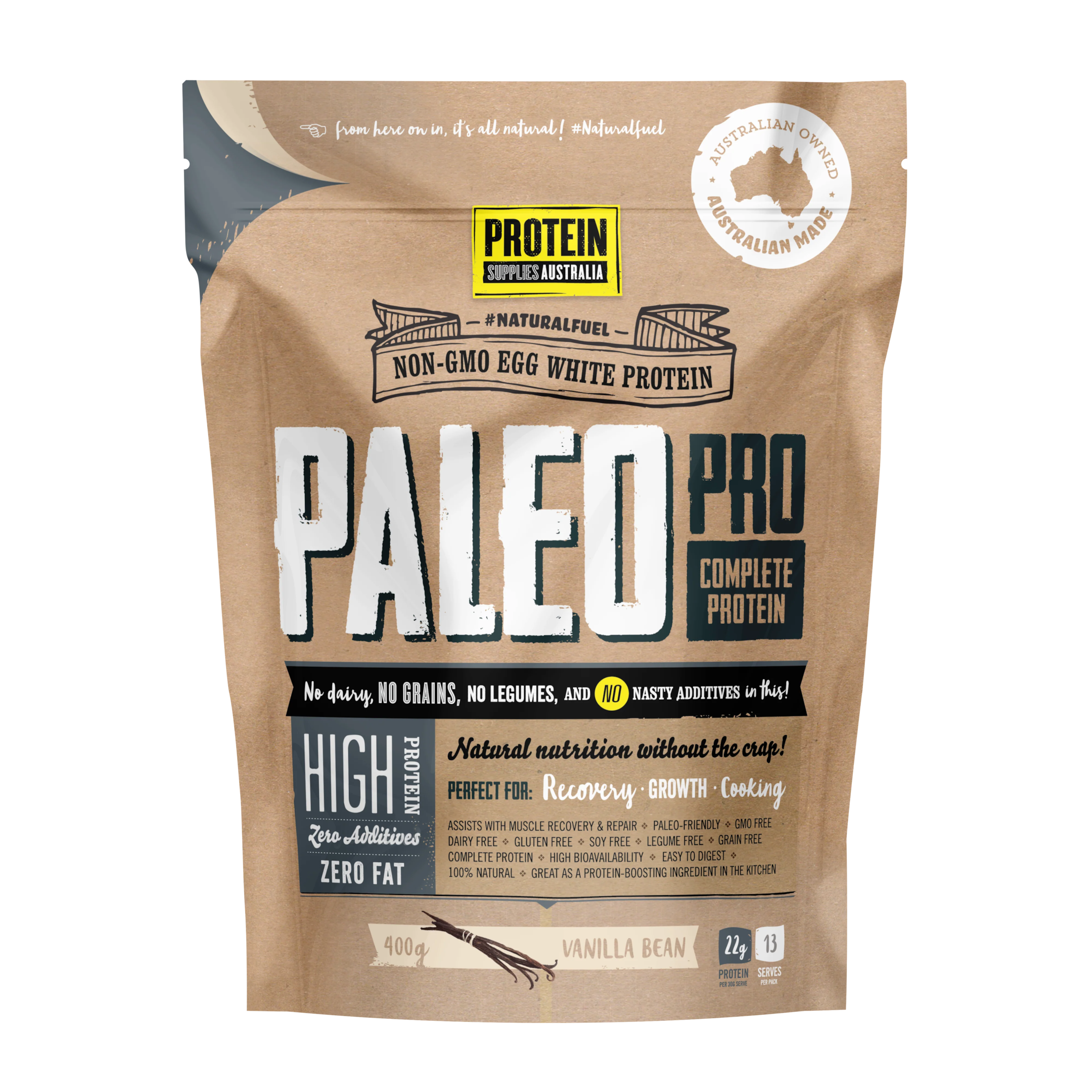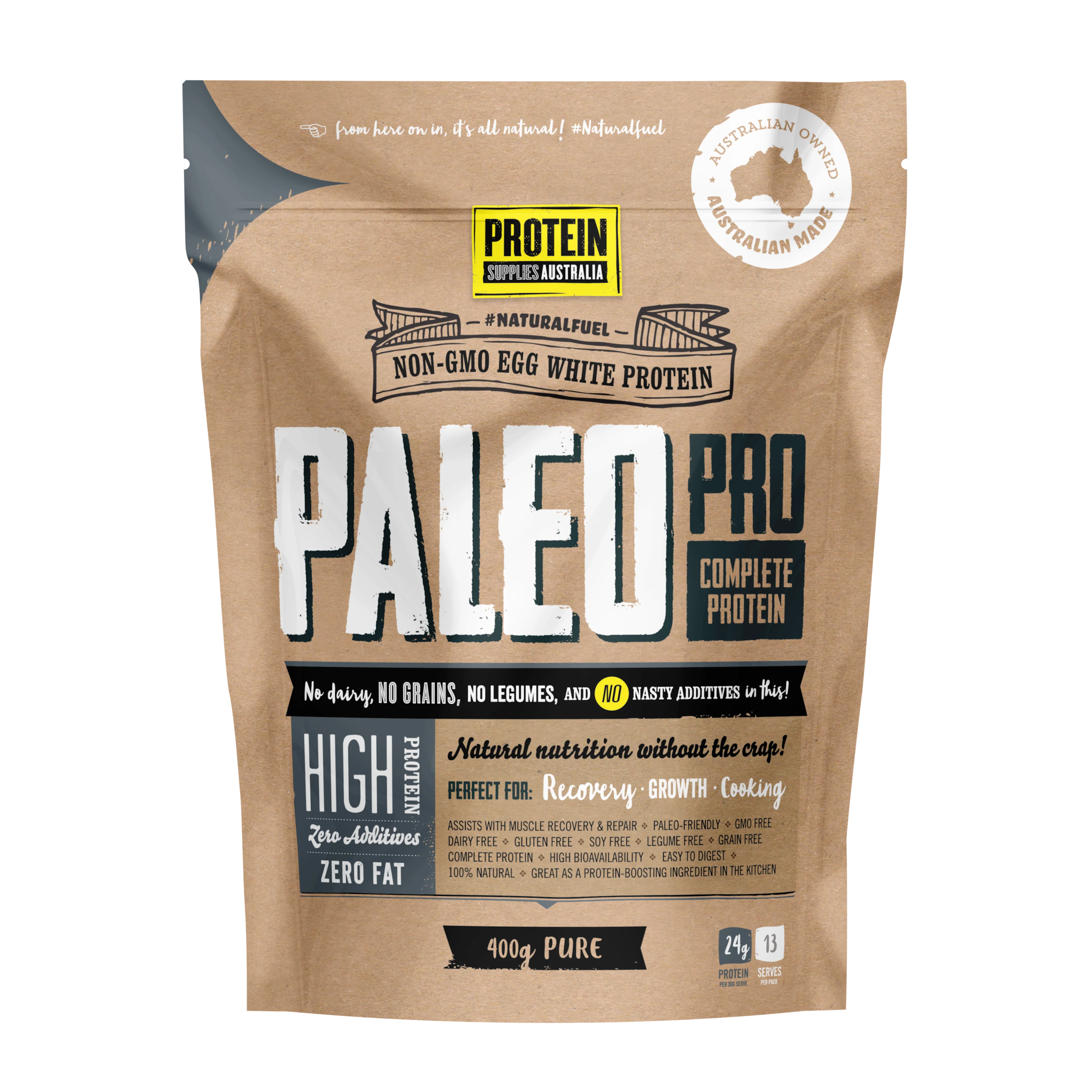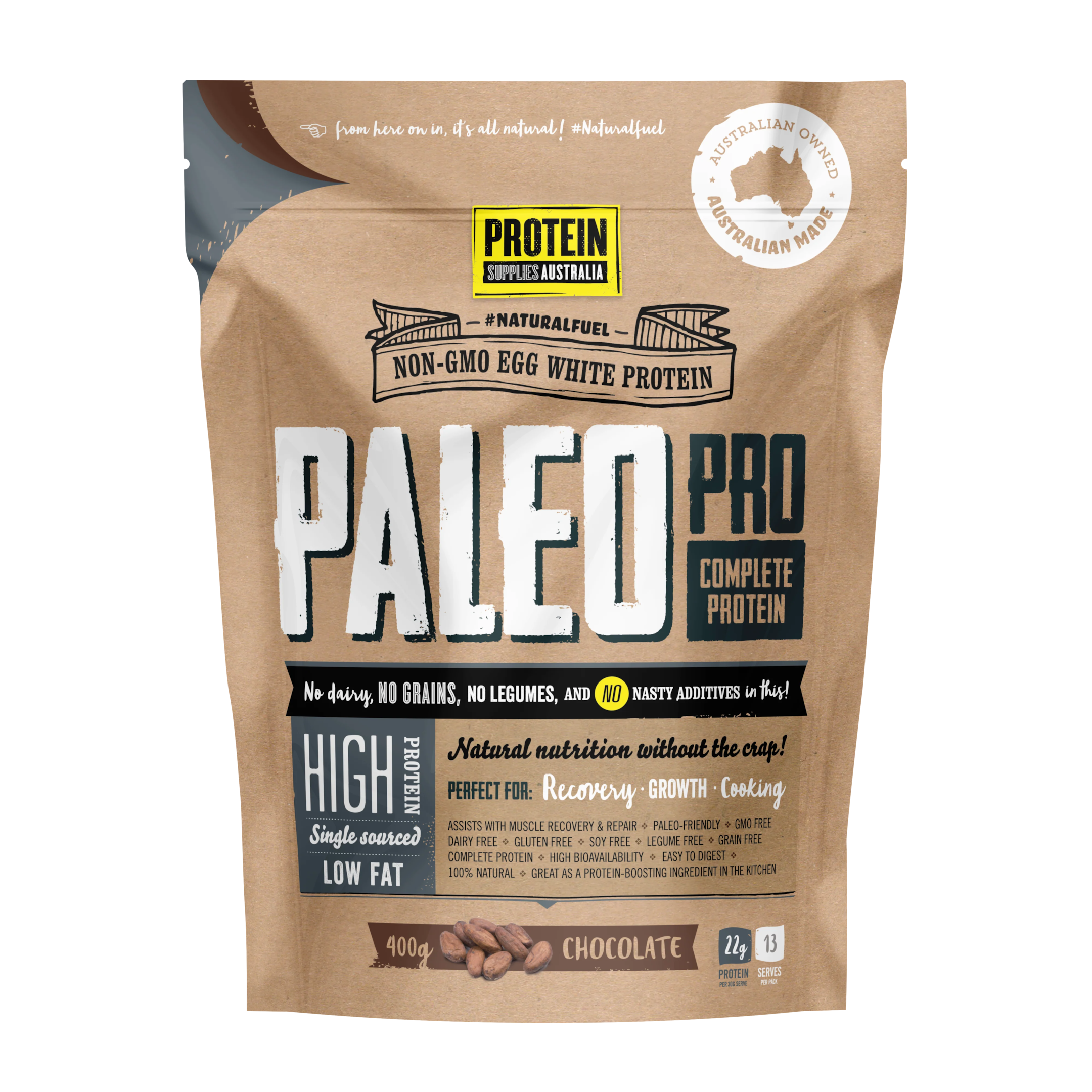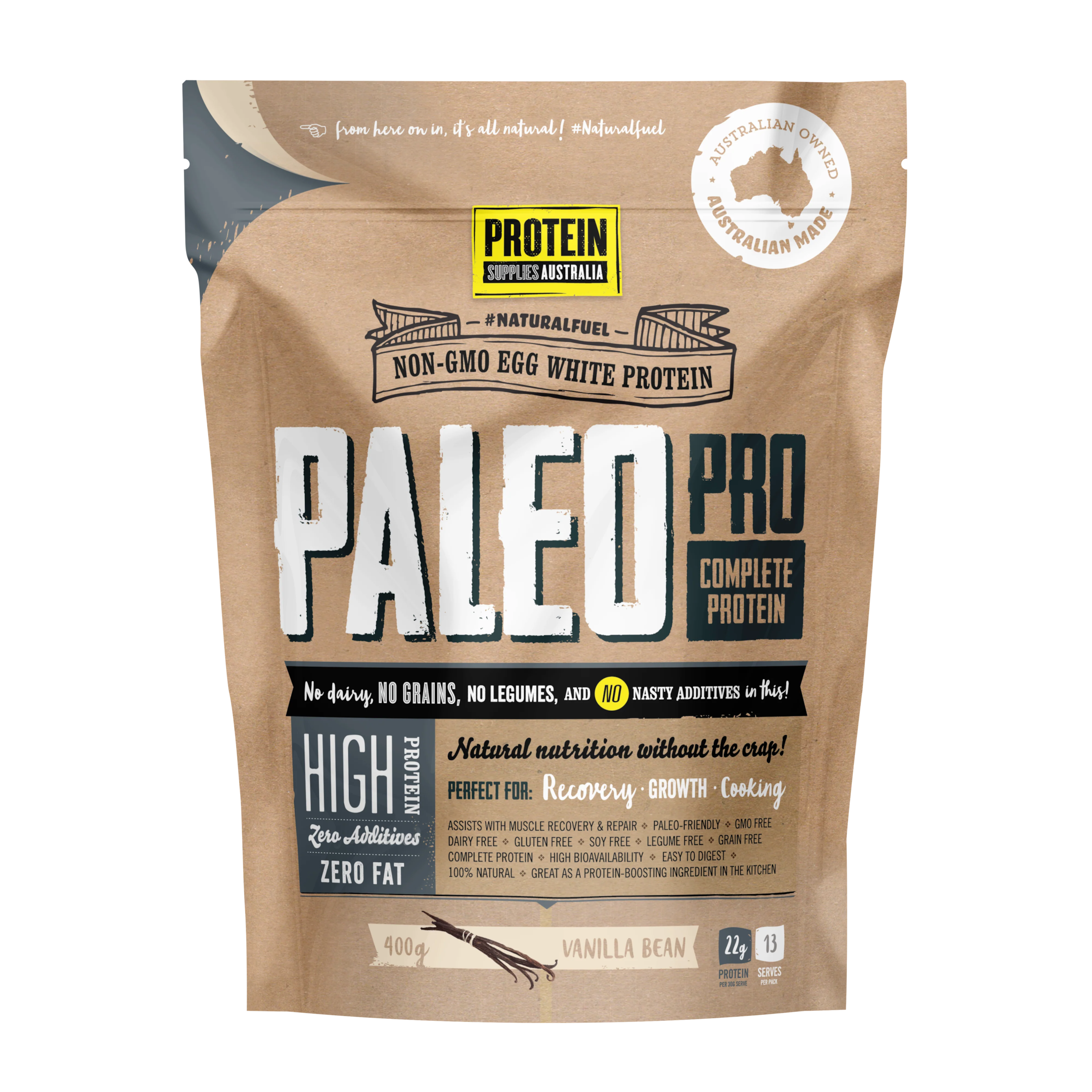Paleo diet
In our modern age of processed foods and fast-paced living, many individuals are yearning for a reconnection to simpler, more nourishing dietary choices. Enter the Paleo Diet, often known as the “Stone Age,” “Caveman,” or Palaeolithic diet.
This ancient approach to nutrition harkens back to an era when our forebear’s, the hunter-gatherers, foraged for their meals, far removed from the agricultural revolutions that would later shape our societies.

But unraveling the layers of either a paleo diet brings forth intriguing questions:
What does it truly entail?
Is it the optimal choice for everyone?
This guide takes a deep dive into the very fabric of paleo foods and principles, shedding light on the potential benefits and risks alike.

Further, we explore how contemporary innovations, like the Paleo Pro Protein from Protein Supplies Australia, are bridging the gap between ancestral dietary practices and today’s needs.
As you navigate this journey into our evolutionary past, assess for yourself whether the hunter gatherer diet and its emphasis on paleo foods resonate with your health aspirations.
What is the Paleo Diet?
The Paleo Diet, often referred to as the “caveman diet” or “stone age diet,” is an approach to nutrition based on the premise of eating like our Palaeolithic ancestors.
Rooted in the belief that modern diseases like obesity, heart disease, and diabetes have arisen due to the shift in our diets, proponents claim that by embracing the palaeolithic diet, we can return to a healthier state.
Essentially, the diet encourages individuals to eat foods that Palaeolithic humans ate.
How Does It Work?
The underlying principle of the Paleo diet is rather simple:
-
Eat Foods that could be hunted or gathered during the Palaeolithic era, such as meats, fish, nuts, greens, and seeds.
-
Avoid Processed Foods and those introduced through modern farming practices. This includes grains, dairy, sugars, refined vegetable oils, and more.
Benefits of the Paleo Diet:
-
Nutrient-Rich Diet: Emphasising fruits, vegetables, and lean meats ensures a nutrient-dense intake.
-
Weight Loss: By cutting out processed foods and sugars which are calorie-laden but nutrient-poor, many find it easier to lose weight on paleo diets.
-
Reduced Disease Risks: Some research points to the correlation between the paleo diet and reduced risk factors for chronic diseases, making the paleo diet healthy for some.
Drawbacks of the Paleo Diet:
-
Lack of Concrete Evidence: While some studies praise the diet’s benefits, the long-term advantages, effects, and comparisons with diets like the Mediterranean diet remain topics of debate.
-
Cost and Accessibility: Adhering to a strict paleo diet can be costly, especially if one prioritises grass-fed and organic produce.
-
Potential Nutrient Deficiencies: Without dairy and grains, nutrients like calcium and certain B vitamins might be in short supply.
-
High in Saturated Fats: Paleo recipes often include meats, leading to a potential increase in saturated fat intake.
What to Eat on the Paleo Diet:
-
Meat and Poultry: Preferably lean cuts, and from grass-fed or organic sources.
-
Fish and Seafood: Fresh catch, including shellfish.
-
Fruits: Fresh varieties without added sugars.
-
Vegetables: Especially non-starchy ones.
-
Nuts and Seeds: These should be consumed in moderation.
-
Natural Fats: Oils like olive and flaxseed.
What to Avoid on the Paleo Diet:
-
Dairy Products: Especially processed kinds.
-
Grains: This includes staples like wheat, rice, and barley.
-
Legumes: Such as beans and peanuts.
-
Processed Foods and Sugars: A strict no.
-
Certain Starchy Vegetables: Like potatoes.
-
Processed Meats: Such as bacon and hot dogs.
Sample Diet Plan:
-
Breakfast: Onion and spinach omelet with Paleo Pro – Pure and a side of liver pâté.
-
Lunch: Tuna wrapped in lettuce sprinkled with almonds.
-
Snack: Hard-boiled eggs.
-
Dinner: Beef bourguignon.
-
Dessert: A coconut milk ice cream, perhaps spiced up with Paleo Pro – Pure for those needing an extra protein boost.
Nutritional Concerns Surrounding Paleo Diets
A significant apprehension regarding the paleo diet revolves around the exclusion of whole grains and legumes. Both are traditionally valued for their rich fiber, vitamins, proteins, and other essential nutrients.
Similarly, low-fat dairy products, which are excluded from the paleo menu, are recognised as key sources of protein, calcium, and various vitamins. The challenge with embracing a paleo lifestyle is ensuring a comprehensive intake of all vital nutrients.
Moreover, staple foods like whole grains, legumes, and dairy are not only nutritionally beneficial but also economical and easily accessible.
In contrast, specialty items like wild game or grass-fed meats, integral to a strict paleo diet, can be pricier. This could deter some from the paleo path due to budget constraints or inadvertently result in a deficient intake of certain nutrients.

The long-term implications of adhering to a paleo regimen remain uncertain. Comparative research into various popular diets has consistently highlighted the Mediterranean diet for its manifold health advantages, devoid of discernible negative effects.
The Mediterranean diet encompasses a balanced intake of fruits, vegetables, lean meats, fish, whole grains, legumes, and low-fat dairy.
Furthermore, while the paleo diet has its proponents, it’s worth noting that its benefits might not necessarily surpass those of other established healthy diets.
A detailed study based on self-reported dietary habits revealed that both the paleo and Mediterranean diets yielded comparable reductions in cardiovascular risk factors when adhered to diligently.
Elevate Your Paleo Journey!
Paleo Pro Protein: Australia’s Premium Source for Paleo Diets
The Rise of Paleo Pro Protein Supplies Australia
Australia has recently witnessed a significant increase in health-conscious individuals and athletes turning towards the Paleo diet.

This ancestral approach emphasises the consumption of whole foods while avoiding grains, legumes, and dairy.
As a consequence, Paleo Pro Protein Supplies emerges as the paramount solution for individuals following this lifestyle, ensuring they get the right amount of protein without compromising on their dietary principles.
Why Choose Paleo Pro Range?
A Truly Paleo-Friendly Protein Source
Our Paleo Pro stands out, not just because it’s high in protein but because it aligns perfectly with the Paleo lifestyle. It’s free from dairy, legumes, and grains, ensuring a pure, undiluted protein source.
Single-Sourced Egg-White Protein
With a commitment to quality, our protein powder is 100% natural, derived from egg whites. This ensures a medium-rate digestion which translates to a steady release of amino acids, making it ideal for muscle recovery and repair.
Mix it Your Way with Paleo Pro – Pure
For the culinary enthusiasts who prefer to customise their flavours, the Paleo Pro Pure variant is a blank canvas. Since it’s unflavoured, you have the freedom to mix it according to your palate, making your protein shake or dish as unique as you.
The Flavours You’ll Love
-
Paleo Pro – Chocolate: A treat for chocolate aficionados. Infused with organic cacao, it offers a rich chocolatey flavour, ensuring that your protein intake is not just nutritious but delicious.

-
Paleo Pro – Vanilla: Experience the creamy texture and authentic taste of vanilla with visible vanilla bean specks, guaranteeing an indulgent protein experience.

Advanced Production Process
Our dedication to quality doesn’t stop at sourcing. We employ reverse osmosis as a concentration method, preserving all naturally present vitamins and minerals. This makes Paleo Pro not only nutritionally superior but also similar in biological quality to whey proteins.
Specially Designed for Sensitive Stomachs
Lactose intolerance or milk allergies can restrict protein choices. But with Paleo Pro, these concerns are history. Being dairy-free, it’s the perfect whey protein alternative for those with sensitivities.
Easy Mixing, No Lumps
A common issue with many protein powders is their inability to mix well. Paleo Pro ensures a lump-free experience, making your protein shakes smooth and easy to consume.
All-Natural Ingredients
The ingredients are transparent, featuring egg albumen powder, natural flavours, organic vanilla bean powder, and a touch of natural sweetener from stevia.
Allergen Consideration
While our product contains egg, our manufacturing processes are stringent, ensuring that cross-contamination risks are minimised. We have an array of processes in place, reinforced by independent audits and certifications from HACCP, SQF, and SAFE FOOD.
Nourishing Nutrition Facts
Per serving (30g) of Paleo Pro, your body receives:
-
ENERGY: 470kJ (112Cal)
-
PROTEIN: 23.4g
-
FAT, TOTAL: 0.0g
-
CARBOHYDRATES: 2.6g
-
SUGARS: 0.3g
-
SODIUM: 353mg
To sum up, Paleo Pro Protein Supplies is not just another protein powder in the market. It’s a holistic solution for those following the Paleo lifestyle in Australia, ensuring they get the best protein source without any compromise.
Whether you’re an athlete aiming for muscle recovery, a culinary enthusiast looking for a protein boost in the kitchen, or simply someone who wants a high-quality protein without any added nasties, Paleo Pro has a variant tailored for you.
Elevate Your Paleo Journey!
FAQ Paleo Diet
What do you eat in a paleo diet?
The paleo diet focuses on consuming foods that were available to our hunter-gatherer ancestors. This includes lean meats, fish, fruits, vegetables, nuts, and seeds, emphasising the consumption of whole foods over processed foods. Grass fed meats and paleo approved foods are highly recommended. Notably, the Paleo Pro – Pure from Protein Supplies Australia is an excellent source of protein that fits within the paleo diet guidelines.
What can’t you eat on a paleo diet?
The paleo diet restricts modern foods like dairy products, legumes, and grains. This means no low fat dairy products, no highly processed foods, and no whole grains.
What is paleo vs Keto?
While both the paleo and keto diets emphasise fewer processed foods and exclude grains and legumes, the keto diet is primarily a low-carbohydrate diet designed to put your body into ketosis, where it burns fat for energy. The paleo diet focuses more on the concept of eating foods available in the Paleolithic era.
What are the pros and cons of the paleo diet?
Pros:
-
Focuses on whole foods.
-
Elimination of processed foods can lead to weight loss.
-
Contains healthy fats, lean protein, and a variety of plant foods.
Cons:
-
Excludes entire food groups which may lead to nutrient deficiencies.
-
May be challenging to sustain long term.
-
The modern paleo diet might not accurately reflect the diet of Palaeolithic humans.
What does the Palaeolithic diet cut out?
The Palaeolithic diet cuts out grains, legumes, dairy, and any foods that were not available to Stone Age hunter-gatherers. This includes highly processed foods and some sources of lean protein.
What are 5 negatives from the paleo diet?
-
Can be expensive due to emphasis on grass fed beef and organic produce.
-
Excludes essential nutrients found in grains and dairy.
-
May lead to a higher intake of red meat, which is linked to heart disease.
-
Paleo diet ignores the benefits of modern foods.
-
Can be socially isolating as many common foods are excluded.
What kind of meat did the Palaeolithic Age eat?
Palaeolithic humans consumed a variety of meats, from large game like mammoths and bison to smaller animals like birds and fish. The emphasis was on wild, not domesticated, sources.
What was the diet of the cavemen?
The caveman, or Stone Age diet, consisted of foods that could be hunted or gathered, such as lean meats, fish, vegetables, fruits, nuts, and seeds. The human diet back then was diverse and depended on the region and season.
What does “paleo” mean?
“Paleo” is short for Palaeolithic, referring to the Stone Age era. The term in diets refers to eating habits inspired by the assumed diet of Stone Age humans.
What the heck is paleo?
Paleo is a modern dietary approach that seeks to mimic the eating habits of our Paleolithic ancestors, emphasising whole foods and excluding processed ones.
What Cannot be eaten on the paleo diet?
You cannot eat dairy, grains, legumes, processed foods, and refined sugars. It excludes many modern foods.
Is paleo the healthiest diet?
While the paleo diet has many health benefits, such as encouraging the consumption of whole foods and healthy fats, it’s debated among nutritionists whether it’s the “healthiest” diet due to its exclusion of certain food groups.
What is the difference between paleo and keto?
Paleo focuses on mimicking the diet of Palaeolithic humans, whereas keto priorities inducing ketosis through a high-fat, low-carb approach.
Is paleo anti-inflammatory?
Yes, the paleo diet can be anti-inflammatory as it promotes the consumption of omega-3 fatty acids from sources like fish and excludes processed foods that can promote inflammation.
How healthy is the caveman diet?
The caveman diet emphasises natural, unprocessed foods, which can offer numerous health benefits. However, strict adherence can lead to nutrient deficiencies.
What would a caveman diet look like?
A caveman diet would be rich in lean meats, fish, fruits, vegetables, nuts, and seeds. The emphasis would be on wild, fresh sources, reflecting a hunter gatherer diet.
What defines a paleo diet?
A paleo diet is defined by its focus on natural, unprocessed foods believed to be consumed by Palaeolithic humans. This includes foods like lean meats, fish, and plant foods and excludes things like dairy and grains.
What are 5 benefits of the paleo diet?
-
Supports weight loss due to reduced calorie intake from processed foods.
-
Promotes healthy eating habits.
-
Encourages intake of more fruits and vegetables.
-
May reduce the risk of chronic diseases.
-
Can improve satiety due to higher protein and fiber intake.
What are 3 disadvantages of the paleo diet?
-
Potential nutrient deficiencies.
-
Can be expensive and hard to follow.
-
May increase intake of saturated fats.
Is the Paleo Diet Suitable for Diabetes?
The diet’s focus on whole foods may support those with type 2 diabetes in managing blood sugar levels. However, the high consumption of red meat, if not monitored, might not be the best for heart health, especially for diabetics.
Conclusion paleo diet
The journey through the Paleo Diet offers a fascinating lens into the dietary practices of our distant ancestors. By embracing this age-old approach, many have experienced the bounty of its benefits, from nutrient-dense meals to potential weight loss successes.
Yet, as with many trending diets, the Paleo Diet isn’t without its hurdles, including potential nutrient gaps and ongoing discussions about its long-term sustainability. If the allure of palaeolithic nutrition calls to you, it’s paramount to arm yourself with the right knowledge.
Seek guidance from healthcare professionals or registered dietitian to ensure that while you’re relishing in the tastes of our ancient past, you’re also nourishing your body holistically.
And if you’re keen on taking your Paleo journey a step further, delve into the wonders of Paleo Pro by Protein Supplies Australia. These premium products seamlessly blend ancient dietary wisdom with modern nutritional science. Discover Paleo Pro today and elevate your Paleo experience to the next level.










